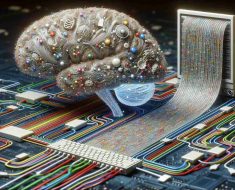
. 2023 Dec 12:285:120499.
doi: 10.1016/j.neuroimage.2023.120499.
Online ahead of print.
Affiliations
Free article
Item in Clipboard
Neuroimage.
.
Free article
Abstract
Anxious depression is a common subtype of major depressive disorder (MDD) associated with adverse outcomes and severely impaired social function. It is important to clarify the underlying neurobiology of anxious depression to refine the diagnosis and stratify patients for therapy. Here we explored associations between anxiety and brain structure/function in MDD patients. A total of 260 MDD patients and 127 healthy controls underwent three-dimensional T1-weighted structural scanning and resting-state functional magnetic resonance imaging. Demographic data were collected from all participants. Differences in gray matter volume (GMV), (fractional) amplitude of low-frequency fluctuation ((f)ALFF), regional homogeneity (ReHo), and seed point-based functional connectivity were compared between anxious MDD patients, non-anxious MDD patients, and healthy controls. A random forest model was used to predict anxiety in MDD patients using neuroimaging features. Anxious MDD patients showed significant differences in GMV in the left middle temporal gyrus and ReHo in the right superior parietal gyrus and the left precuneus than HCs. Compared with non-anxious MDD patients, patients with anxious MDD showed significantly different GMV in the left inferior temporal gyrus, left superior temporal gyrus, left superior frontal gyrus (orbital part), and left dorsolateral superior frontal gyrus; fALFF in the left middle temporal gyrus; ReHo in the inferior temporal gyrus and the superior frontal gyrus (orbital part); and functional connectivity between the left superior temporal gyrus(temporal pole) and left medial superior frontal gyrus. A diagnostic predictive random forest model built using imaging features and validated by 10-fold cross-validation distinguished anxious from non-anxious MDD with an AUC of 0.802. Patients with anxious depression exhibit dysregulation of brain regions associated with emotion regulation, cognition, and decision-making, and our diagnostic model paves the way for more accurate, objective clinical diagnosis of anxious depression.
Keywords:
Anxious depression; Gray matter volume; Major depressive disorder; Random forest model; Resting-state functional MRI.
Copyright © 2023. Published by Elsevier Inc.
Conflict of interest statement
Declaration of Competing Interest The authors declare that the research was conducted in the absence of any commercial or financial relationships that could be construed as a potential conflict of interest.





